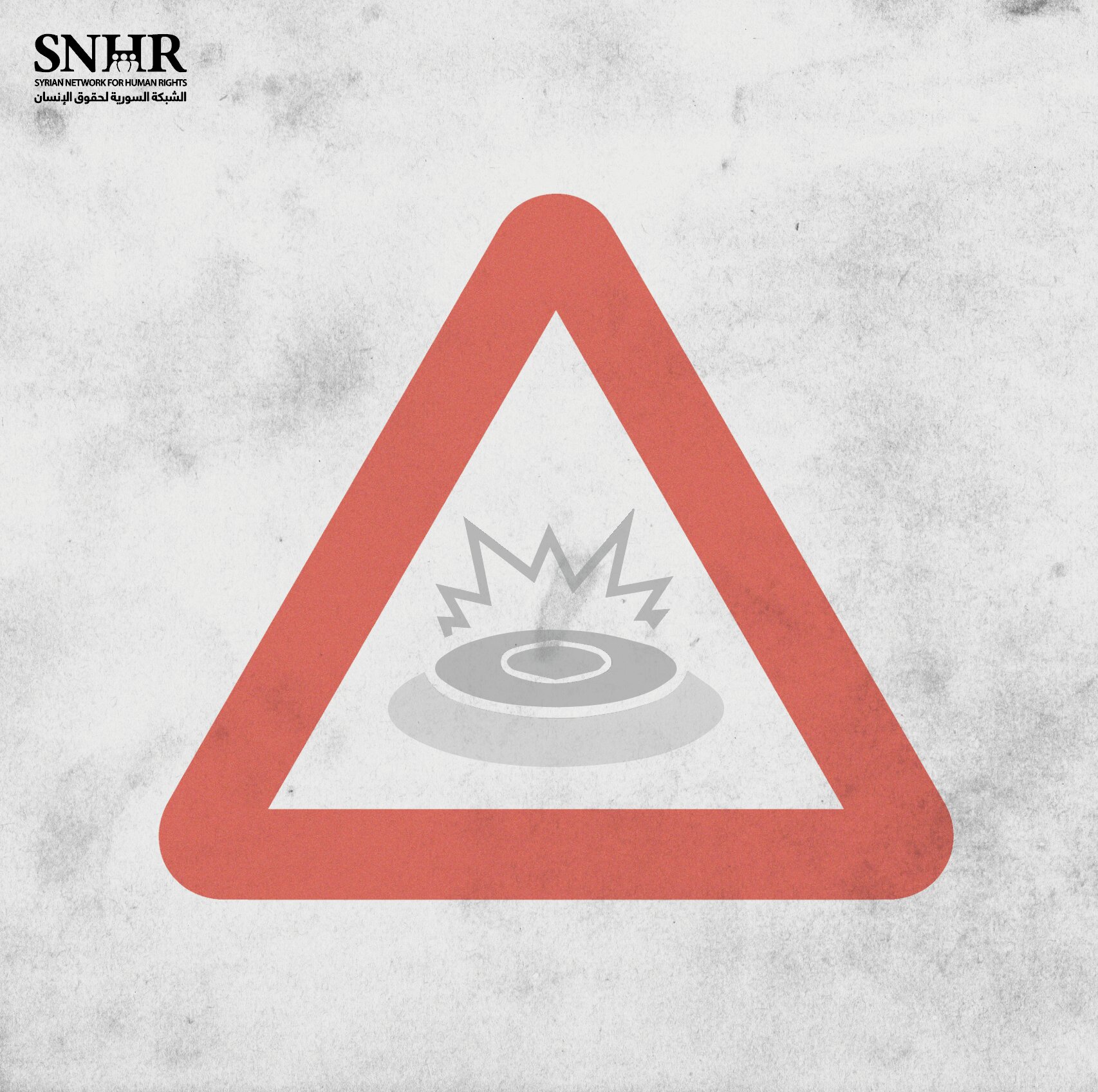2,829 Civilians, Including 699 Children, Have Been Killed by Mines in Syria Since 2011
Languages
Available In
Press release:
Paris- The Syrian Network for Human Rights (SNHR) reveals in its latest report, issued to mark the International Day for Mine Awareness, that Syria is among the world’s worst countries for the number of mines planted in unknown locations, noting that 2,829 civilians, including 699 children, have been killed by mines in Syria since 2011 to date.
The seven-page report explains that April 4 marks the annual International Day for Mine Awareness and Assistance in Mine Action, with this date in 2022 coming just after Syrians commemorated the milestone of 11 years since the start of the popular uprising in Syria which subsequently turned into an internal armed conflict, adding that the different parties to the conflict have used mines extensively, which has caused hundreds of deaths and injuries. The report explains that the Syrian regime, in particular, possesses tens of thousands of mines, noting that the ease and low cost of manufacturing mines have also enabled other parties to the conflict to use them extensively, with all parties showing absolute indifference to disclosing their locations or clearing them, and stressing that this means that their lethal danger has been extended for many decades and threatens the lives and movement of Syrian citizens, particularly children.
The report defines anti-personnel and anti-vehicle landmines as weapons designed to be placed under or above the ground, then to explode because of the proximity or contact of a person or vehicle, adding that this weapon, which is prohibited under international law, is arbitrary and indiscriminate. The report further notes that one of the most prominent difficulties and special challenges facing SNHR and preventing it from assigning responsibility for the killings caused by landmines to a specific party involved in the conflict, is that most of the parties to the conflict use this type of weapon, in addition to the multiple changes of control by parties to the conflict and forces over the areas where minefields exist. None of the parties to the conflict and the controlling forces in Syria have revealed maps of the locations where they planted landmines. As the report further notes, SNHR believes there are dozens of minefields that have yet to be discovered.
Between March 2011 to April 4, 2022, the report reveals, SNHR documented the deaths of at least 2,829 civilians, including 699 children, 294 women (adult female), eight medical personnel, six Civil Defense personnel, and nine media personnel, due to hundreds of mine explosion incidents in various Syrian governorates. Analysis of SNHR’s data showed that nearly half of landmine victims were killed in Aleppo and Raqqa governorates, with the death toll from landmine explosions in both governorates comprising approximately 49% of the total death toll, followed by Deir Ez-Zour governorate with approximately 17% of the total. The report provides charts for the distribution of the death toll due to mines by years since March 2011, noting that the cumulative indicator shows that nearly one-third of the death toll was documented in 2017, which saw the highest death toll compared to the other years.
The report stresses that the massive death toll of victims killed by mines in Syria further confirms the need for the world to be free from these heinous weapons. The report also notes that despite SNHR’s documentation of continuous horrific deaths and injuries due to the use of landmines and our repeated heartfelt appeals for all sides to end their use, along with urgent requests for the essential intervention of international teams to help expose the locations where landmines are deployed and to put pressure on the controlling forces in Syria to determine their locations of deployment in order to reduce the number of casualties among civilians resulting from them, these abysmal weapons continue to be used.
The report recommends increasing the support for organizations working in clearing landmines, especially the Syrian Civil Defense (White Helmets), and achieving measurable progress in the quality of life for victims of mines and cluster munitions.
The report calls on the Security Council and the international community to increase logistical assistance to local organizations and local police working in the field of detecting and dismantling mines, to begin to compensate victims and their families, and to focus on provision of the psychological treatment process for survivors, as well as making other additional recommendations.



